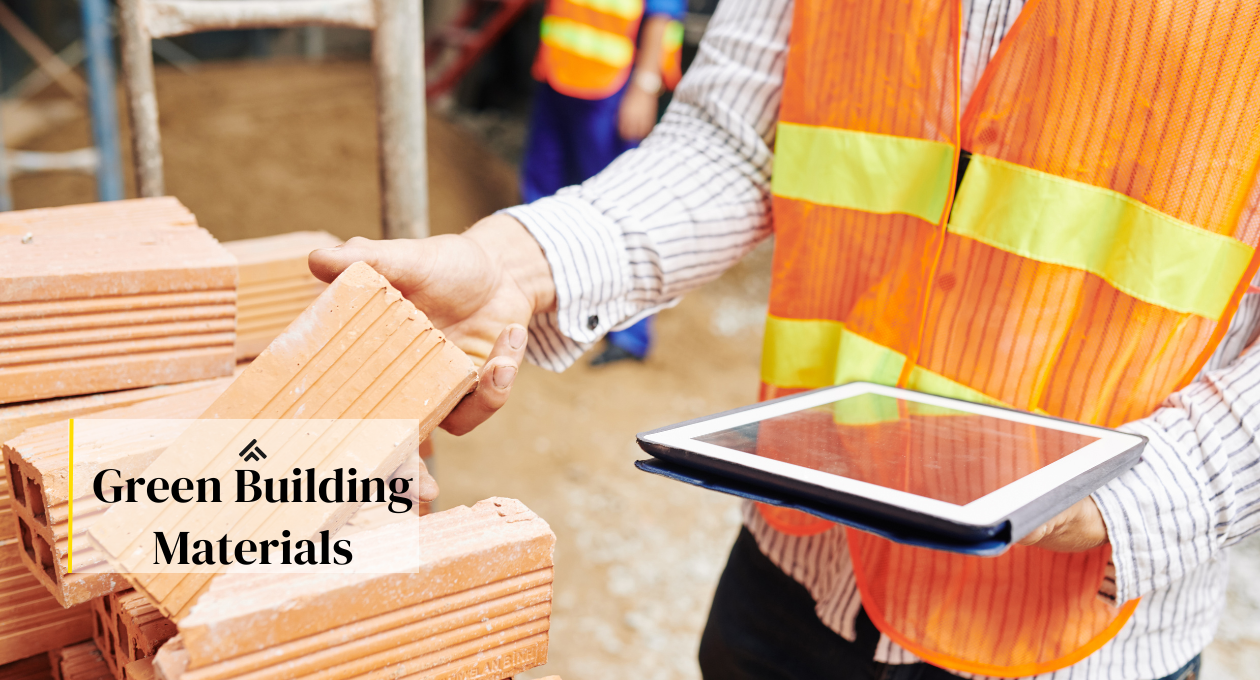The world is experiencing rapid growth in population and urbanization, leading to increased demand for building and infrastructure construction. This development significantly impacts the environment, from depleting natural resources to emitting harmful gases.
This has sparked a global movement towards sustainable practices in all industries, including the construction sector. A critical aspect of sustainability is green building materials, an innovative approach that aims to reduce the negative environmental impacts caused by traditional building materials.
I will delve into the concept of green building materials, their benefits and challenges, and explore some examples of these eco-friendly alternatives that are reshaping the future of construction. Drywall Takeoff Services prioritize sustainability without compromising on quality or efficiency. Let’s build a better tomorrow, one green project at a time. Let’s dive in!
Exploring the Top Green Building Materials for 2024
Green building materials are foundational components used in construction that are environmentally responsible and resource-efficient throughout their life cycle. These materials are selected for their ability to minimize their impact on the environment, from the sourcing and processing of raw materials through to their manufacture, use, and eventual disposal or recycling.
Electric Construction Equipment
The move towards electric construction equipment is a significant shift in the construction industry. This change aims to reduce the carbon footprint associated with construction activities by eliminating the emissions from traditional diesel-powered machinery. Electric equipment also contributes to reducing noise pollution on construction sites.
Cork:
Harvested from the outer layer of the cork oak tree’s bark, cork is obtained through a process that ensures the tree remains unharmed. Due to its unique properties, this sustainable material finds versatile applications in various industries, such as flooring, insulation, and even fashion accessories.
Recycled Plastic:
When used in decking, fencing, and as a critical component in composite materials. Recycled plastic significantly reduces the amount of waste in landfills. This environmentally friendly practice helps in waste management and promotes sustainability by giving new life to materials that might otherwise harm the environment.
Low-Carbon Concrete and Wood
Innovations in concrete and wood production are leading to development of low-carbon alternatives. These materials are designed to significantly reduce the environmental impact of construction by using less energy-intensive processes and incorporating recycled or waste materials in their composition. Low-carbon concrete and wood are pivotal in the push towards more sustainable construction practices.
Bio-Based Materials
Bio-based materials such as bio-bricks, hempcrete, and other organic products are on the rise. These materials are derived from natural, renewable resources and offer a lower carbon footprint than traditional building materials. They are also praised for their biodegradability and energy-efficient production processes.
Hempcrete:
A combination of hemp fibers and lime creates hempcrete, a sustainable building material known for its exceptional insulation properties. Not only does hempcrete provide excellent thermal performance, but it stands out for being carbon-negative, making it an environmentally friendly choice for construction projects.
Adobe Brick:
Made from a blend of clay, water, and straw, adobe bricks have been utilized for centuries as a traditional building material known for its exceptional natural thermal mass properties. This unique composition ensures a sustainable and eco-friendly construction method and contributes to energy efficiency by effectively regulating indoor temperatures.
Innovative Heat-Pump Energy Storage
Heat-pump energy storage systems are among the top industry-transforming products for 2024. These systems efficiently manage heating and cooling in buildings, leveraging ambient air temperatures and ground-source heat to reduce energy consumption. This technology is a critical component of the future of green building.
Bamboo and Mass Timber
Bamboo and mass timber are gaining popularity for their sustainability benefits. These materials increase and sequester carbon, making them an excellent choice for environmentally conscious construction projects. They also offer structural integrity and aesthetic appeal, making them suitable for various applications.
Recycled and Recyclable Materials
Using recycled materials such as steel, concrete, and glass is becoming increasingly important in green building. These materials help reduce waste and the demand for virgin resources, contributing to a more circular economy in the construction industry. Recyclable materials also ensure that today’s buildings can become tomorrow’s resource pool.
Advanced Flood Protection
With climate change leading to more frequent and severe weather events, flood protection has become a critical consideration in construction. Products like AquaFence Flood Barriers offer innovative solutions for protecting buildings from water damage, highlighting the industry’s focus on resilience and adaptability in changing environmental conditions.
The construction industry embraces a wide range of green building materials and technologies. From electric construction equipment to bio-based materials and advanced energy storage solutions. These innovations are setting the stage for a more sustainable future in construction.
To read more articles visit nydailybuzz
Conclusion
Green building materials offer significant environmental benefits and economic and health advantages for both individuals and society. From reducing energy consumption and carbon emissions to creating healthier living spaces and promoting sustainable practices. Green building materials are undoubtedly the way forward in the construction industry. Therefore, it makes good financial sense for developers and contractors to invest in these materials now, not only for the long-term cost savings they offer but also to contribute towards a greener future for future generations. It is time for all stakeholders in the construction industry to embrace green building materials as a standard practice, not just a choice.

